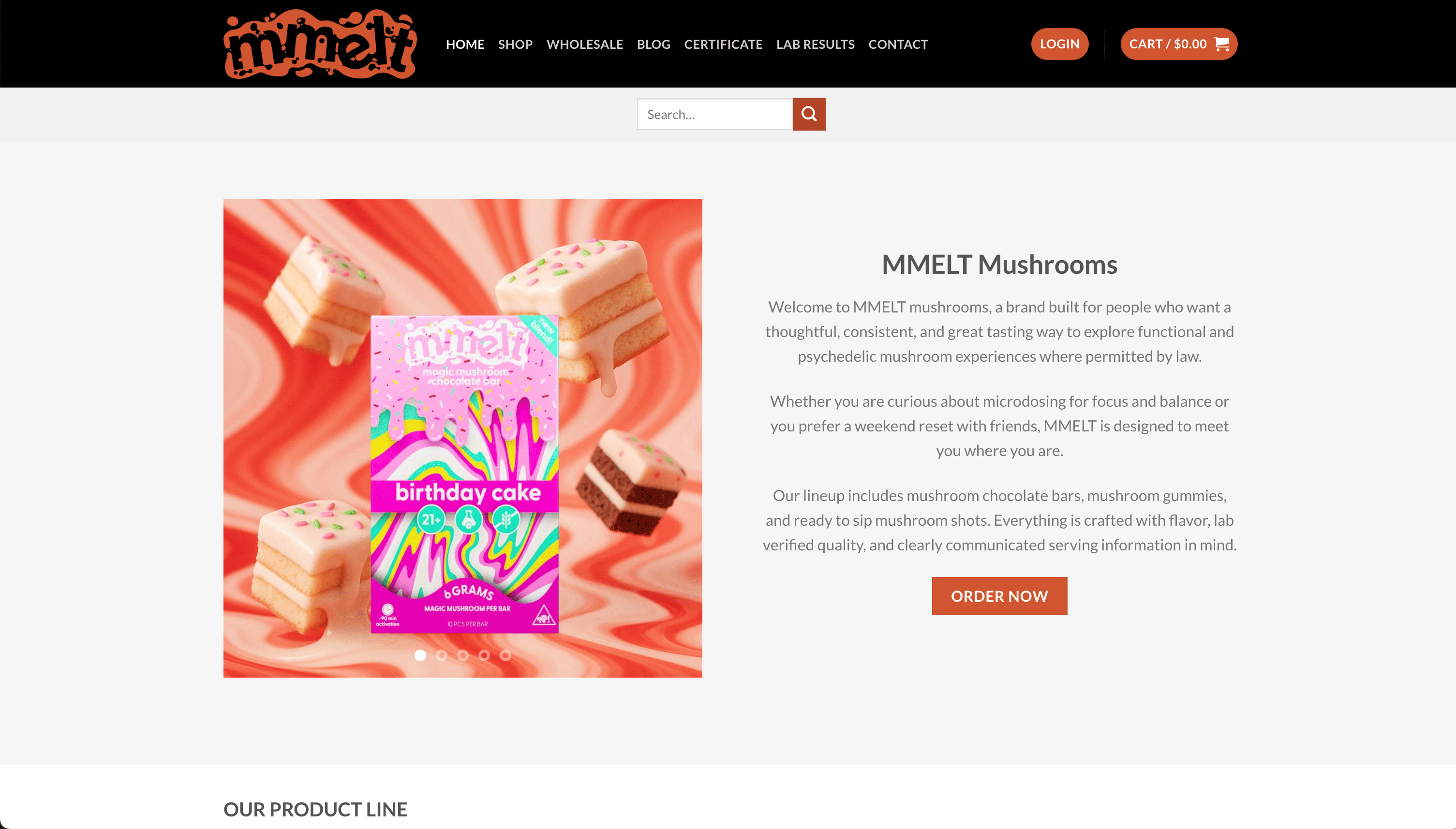Blog
Understanding the Difference: Microdosing vs Macrodosing
People are experimenting with psychedelics in ways that are nothing like the old stereotypes. Some take just 1 percent of a standard dose and never see a single hallucination. Others go far bigger, chasing complete changes in consciousness. At first glance it seems obvious which method leads to wild experiences, but the most interesting breakthroughs are happening where people barely feel a thing.
Table of Contents
- What Are Microdosing And Macrodosing?
- The Psychological And Physiological Effects
- Practical Uses And Cultural Significance
- Risks And Benefits Of Each Approach
Quick Summary
| Takeaway | Explanation |
|---|---|
| Microdosing involves very small doses | Typically about 1% of a standard dose, providing subtle effects without full psychedelic experiences. |
| Macrodosing triggers profound changes | Consuming full doses can lead to significant psychological and neurological alterations, facilitating deep insights. |
| Both methods have therapeutic promise | Research shows potential benefits in treating mental health conditions like anxiety and depression with responsible use. |
| Risks vary between microdosing and macrodosing | Microdosing has mild risks, while macrodosing involves potentially intense psychological effects and sensory overload. |
| Individual responses can differ greatly | Variability in how people react emphasizes the need for informed engagement and professional guidance. |
What are Microdosing and Macrodosing?
Microdosing and macrodosing represent two distinct approaches to consuming substances like psychedelics, with dramatically different dosage levels and intended outcomes. Understanding the difference between microdosing vs macrodosing helps individuals make informed decisions about substance consumption and potential experiences.
Defining Microdosing
Microdosing involves consuming extremely small quantities of a substance, typically psychedelics like psilocybin mushrooms or LSD, at levels far below what would trigger substantial perceptual changes. According to microdosing research, these doses are approximately 1% of a standard pharmacological dose, designed to provide subtle neurological and cognitive benefits without inducing full psychedelic experiences.
Key characteristics of microdosing include:
- Subperceptual dosage levels
- Minimal to no hallucogenic effects
- Potential cognitive and emotional enhancement
- Typically scheduled in precise, controlled intervals
Understanding Macrodosing
In contrast, macrodosing represents consuming a full, standard psychoactive dose intended to produce profound alterations in perception, consciousness, and sensory experience. These doses are significantly larger and designed to trigger comprehensive psychological and neurological transformations. Psychedelic research indicates macrodoses can lead to intense introspective experiences, potential therapeutic breakthroughs, and substantial shifts in mental framework.
Macrodosing typically involves:
- Complete perceptual transformation
- Significant neurological and psychological shifts
- Extended duration of altered consciousness
- Potential for deep emotional and spiritual insights
While both approaches involve psychoactive substances, their intentions, dosages, and potential outcomes differ substantially, highlighting the nuanced spectrum of substance interaction and human experience.
To clarify the distinctions between microdosing and macrodosing as described in this article, the following table organizes their key features, dosage ranges, intended effects, and typical outcomes.
| Aspect | Microdosing | Macrodosing |
|---|---|---|
| Typical Dose | ~1% of a standard dose | Full/standard psychoactive dose |
| Intended Effects | Subtle cognitive and mood enhancement | Profound alteration of perception and consciousness |
| Perceptual Changes | Minimal to none; subperceptual | Complete sensory and perceptual transformation |
| Common Duration | Short, with little disruption to daily life | Extended periods of altered consciousness |
| Typical Use Case | Regular, controlled intervals for daily functioning | Occasional, intentional sessions for deep exploration |
| Key Risks | Mild, possible physiological effects | Intense psychological effects, sensory overload |
| Key Benefits | Cognitive focus, anxiety reduction | Therapeutic insights, trauma resolution, intense self-understanding |
![]()
The Psychological and Physiological Effects
The psychological and physiological impacts of microdosing and macrodosing diverge significantly, representing complex interactions between substances and human neurological systems. These variations reveal profound differences in how different dosage levels can fundamentally alter cognitive processing, emotional experiences, and bodily responses.
Microdosing Effects
Microdosing produces subtle yet potentially meaningful neurological changes without triggering intense perceptual shifts. Research studies highlight several key psychological and physiological outcomes associated with microdosing:
- Mild mood enhancement
- Incremental improvements in cognitive focus
- Potential reduction in anxiety symptoms
- Minimal physiological disruption
These minimal dose interventions suggest neuroplastic potential without overwhelming the body’s regulatory systems. Users often report experiencing gentle cognitive recalibration rather than dramatic psychological transformations.
Macrodosing Neurological Impact
In stark contrast, macrodosing induces comprehensive neurological reconfiguration. These substantial doses create profound perceptual and consciousness alterations that can fundamentally reshape an individual’s psychological landscape. According to integrative psychedelic research, macrodosing can trigger:
- Complete sensory perception restructuring
- Intense emotional processing and potential trauma resolution
- Significant default mode network disruption
- Temporary suspension of typical cognitive constraints
The neurological experience during macrodosing represents a radical departure from ordinary consciousness, potentially facilitating deep psychological insights and transformative experiences. These alterations can produce long-lasting changes in perspective, emotional regulation, and self-understanding.

Understanding these differential effects underscores the complexity of psychoactive substances and their nuanced interactions with human neurochemistry. Individual responses remain highly variable, emphasizing the importance of responsible, informed, and context-specific substance engagement.
Practical Uses and Cultural Significance
The landscape of microdosing and macrodosing extends far beyond mere substance consumption, representing complex intersections of scientific research, therapeutic potential, and evolving cultural perspectives. These approaches have emerged as significant areas of exploration across multiple domains of human experience.
Therapeutic and Mental Health Applications
Both microdosing and macrodosing have demonstrated promising potential in mental health treatment. Research indicates that individuals practicing microdosing often report significant reductions in depression, anxiety, and stress levels. Therapeutic applications span various psychological conditions, suggesting these approaches might offer alternative pathways for mental health management.
Key therapeutic potential includes:
- Potential treatment for treatment-resistant depression
- Exploration of trauma resolution mechanisms
- Neuroplasticity enhancement
- Alternative approaches to traditional psychiatric interventions
Cultural and Psychological Exploration
Beyond clinical applications, microdosing and macrodosing represent profound tools for psychological and spiritual exploration. These practices challenge traditional boundaries of consciousness, offering individuals opportunities for deep introspection and personal transformation. The cultural significance lies in their potential to expand understanding of human cognitive and emotional experiences.
Social and cultural dimensions encompass:
- Challenging traditional medical paradigms
- Facilitating personal growth and self-understanding
- Creating spaces for alternative consciousness exploration
- Developing new frameworks for understanding mental health
While these approaches hold fascinating potential, they remain complex and nuanced practices requiring responsible, informed engagement. The intersection of scientific research, personal experience, and cultural understanding continues to shape our comprehension of these profound substance interactions.
Risks and Benefits of Each Approach
Microdosing and macrodosing present complex arrays of potential benefits and risks, requiring nuanced understanding and careful consideration. These approaches represent distinctly different strategies for engaging with psychoactive substances, each carrying unique physiological and psychological implications.
Microdosing Considerations
Research examining microdosing practices reveals a landscape of potential advantages and potential drawbacks. Subtle neurological modifications characterize this approach, offering potential cognitive enhancements without overwhelming psychological disruption.
Potential benefits include:
- Incremental cognitive performance improvement
- Potential mood stabilization
- Reduced anxiety symptoms
- Minimal perceptual interference
However, potential risks warrant careful examination:
- Potential long-term cardiac health concerns
- Physiological tolerance development
- Possible unintended neurochemical adaptations
- Limited comprehensive scientific validation
Macrodosing Comprehensive Impact
Macrodosing represents a more intense intervention, producing profound psychological and neurological transformations. These substantial doses create comprehensive experiential shifts that can potentially facilitate deep therapeutic breakthroughs.
Significant potential benefits encompass:
- Radical perspective transformation
- Intensive emotional processing
- Potential trauma resolution mechanisms
- Spiritual and existential insight generation
Corresponding risks include:
- Potential psychological destabilization
- Risk of overwhelming sensory experiences
- Temporary cognitive disorientation
- Potential triggering of latent psychological conditions
Ultimately, both approaches demand responsible, informed engagement, emphasizing individual variability and the critical importance of professional guidance and comprehensive understanding.
The following table provides a concise overview of the potential benefits and risks associated with both microdosing and macrodosing, helping to summarize the distinct implications of each approach as described in the article.
| Approach | Potential Benefits | Possible Risks |
|---|---|---|
| Microdosing | Cognitive improvement, mood stabilization, anxiety reduction, minimal interference with perception | Long-term cardiac concerns, tolerance development, neurochemical changes, limited scientific validation |
| Macrodosing | Perspective shifts, emotional processing, trauma resolution, spiritual insight | Psychological destabilization, sensory overload, cognitive disorientation, latent condition triggering |
Find Trustworthy Microdosing and Macrodosing Solutions That Match Your Needs
Navigating the world of microdosing and macrodosing can feel overwhelming, especially when accuracy, safety, and reliable information are your top concerns. Many people struggle with vague product labels, inconsistent dosages, and a lack of transparency that only increases uncertainty when deciding how to approach their own journey. If you are searching for precisely dosed options supported by clear lab data, you are not alone—these are some of the main pain points discussed throughout this article.

Take control with MMELT Mushrooms, where you get:
- Lab-verified mushroom edibles with clear dosing and ingredient info
- Full product transparency and third-party lab results for peace of mind
- A range of mushroom-infused choices for both microdosing and macrodosing
Explore our straightforward shopping experience to find products that fit your needs and goals today. The best moment for safe, informed exploration is now—visit MMELT Mushrooms and discover a higher level of confidence with every choice.
Frequently Asked Questions
What is the main difference between microdosing and macrodosing?
Microdosing involves taking very small doses of psychedelics, typically around 1% of a standard dose, to enhance cognitive functioning without significant perceptual changes. In contrast, macrodosing refers to consuming a full psychedelic dose intended to produce profound alterations in consciousness and sensory experiences.
What are the psychological effects of microdosing?
Microdosing may lead to subtle improvements in mood, cognitive focus, and potentially reduce anxiety symptoms without causing hallucinogenic effects. Users often report enhanced emotional well-being and cognitive recalibration when using these small doses.
What risks are associated with macrodosing?
Macrodosing carries risks such as psychological destabilization, overwhelming sensory experiences, and the potential triggering of latent psychological conditions. These substantial doses can lead to significant emotional processing and transformative insights but should be approached with caution.
How can microdosing be beneficial for mental health?
Research suggests that microdosing may provide significant benefits for mental health, including reduced symptoms of depression and anxiety, and enhancing neuroplasticity. It offers an alternative pathway that might complement conventional psychiatric treatments for certain individuals.
Recommended
- Mushrooms vs Synthetic Psychedelics: Understanding the Differences – MMELT
- Mastering Mushroom Edible Consumption Steps for Health Benefits – MMELT
- Understanding What is Legal Microdosing – MMELT
- 7 Key Insights: Psychedelic Mushrooms Explained – MMELT

